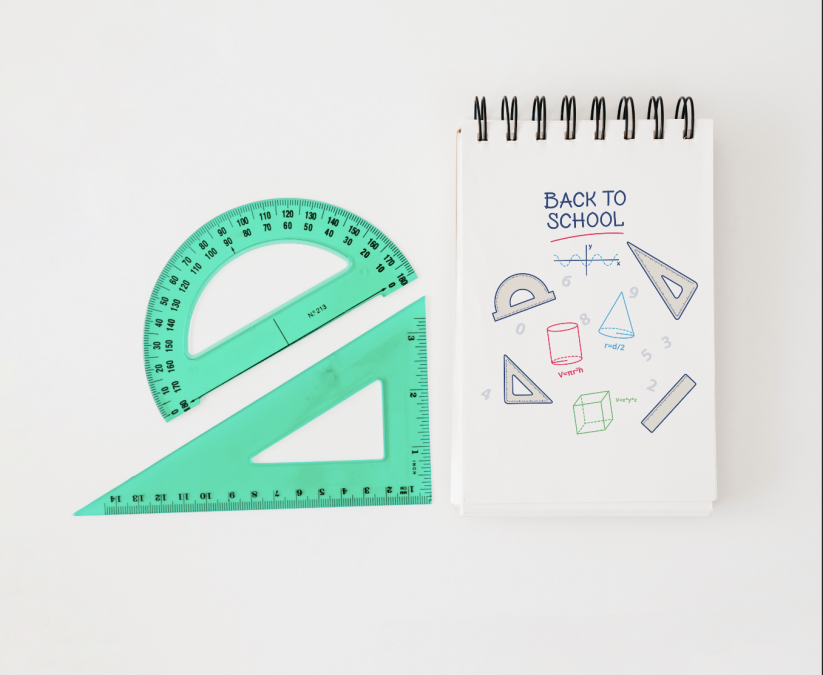
Keeping Up With The Kids: Summer Safety and Back to School Best Habits
August 2, 2023
A Harvest of Artistry – Point of Vue August 2023
August 2, 2023August is a month of many seasons. For one, it’s the peak of “hot” season in Louisiana. For another, it’s the start of white shrimp season. And, of course, it’s the start of school season. Now, the box stores tell us that school supplies are currently on sale, but I say they’re “on sail,” as prices have soared, blown by some uncontrollable wind in our household canvases, pushing our spending ships into uncharted waters. Nonetheless, we buy because nobody wants to send their kids to school without the right stuff—like crayons, pencils, composition books, loose leaf paper, binders, and, for the more fortunate, maybe an iPad or laptop computer.
Protractors are one of those supplies. This neat, plastic, half-circle can measure length on the flat-side ruler and angles on the round-side arch. It can measure “right” angles, the lines for which are 90 degrees of arc from one another—like the two sides of a square—and any “acute” angle, which would measure less than 90 degrees, and any “obtuse” angle, which would measure more than 90 degrees. The better protractors have a series of lines emerging from a center point just like rays from the sun on the horizon at morning—an ingenious, symbolic message to help keep students awake during that painful, early-morning geometry class at first period.
The protractor that we know today was invented way back in the 16th century. But way, way back, our more distant ancestors also needed to measure angles to build the Ancient World. Whether it was right angles for defensive stone walls protecting their cities from invaders or acute angles for the sloping walls of pyramids protecting their dead, ancient builders constructed a diversity of angular structures relative to the local plane of the earth. They employed skilled geometricians who measured angles by such early instruments as the outdoor Groma—four weights hanging by ropes from sticks fixed at right angles, or perpendicular, to one another. The Groma wasn’t very accurate, as you can imagine (especially when it was windy) and yet, ironically, many ancient structures still stand after thousands of years.
Rather than ancient builders, however, it was those Ancients peering into the skies who were the earliest masters of angles. Some measured the Sun’s shadow against marks on stone tables to determine time and season. Others measured and recorded eclipses, the motion of the planets, and the rising and setting of stars and planets beneath what they believed was a grand celestial sphere. And those stars and reflective planets known to the geometrically curious Ancients are the same as those we saw in late summer two year ago—sometimes seen between the rafters of our roofs and sometimes made more brilliant in the dark, unelectrified world of late August 2021—in yet another of August’s seasons.
We live in a perpendicular world, with homes and their walls sprouting from the earth at right angles. Just like trees. And it’s the same way we raise radio towers and bury electricity posts: at right angles to the local plane. Even plants and flowers grow at right angles from that plane upward toward the thing in the sky that excites the electrons in their chlorophyll. But hurricanes—the bane of PoV country—fight and often beat down our perpendicularity. By late August 2021, most right angles along the bayous were rendered acute. Poles and posts and trees and walls—all those things that stood upright like the Ancients built their protective walls— were bent and broken. Roofs with acute slopes like the Pyramids were ripped from their underlying wall supports. Some remain so. Others are only recently repaired. Still others are gone forever.
But here in PoV country, we’ve solved our acute angle problems before–just as we had for Hilda in 1964, Betsy in 1965, Allison in 1992, Katrina in 2005, and now Ida in 2021, as well as every other weather system that disrupted our peace and perpendicularity. And here’s a funny thing about those words used to describe angles. “Right” doesn’t simply describe a 90-degree angle or a structure perpendicular to a plane. It also means “correct” or “normal.” And “acute” also means “temporary” and not “chronic.” These words also describe our resilience to storms: Our disruptions are acute, and our bayou world will be made normal again. We will gaze at the celestial sphere the same way as we did before and with the same ancient curiosity and angles.
So, when shopping for school supplies this season, remember to buy your kid a protractor and thereby invest in the training of those carpenters, construction workers, engineers, and resilience leaders who will fix our future acute angles and right our world once again. Because of those folks, we don’t use ancient Gromas to measure angles any longer. Weights hanging by rope from a stick? We can use that to catch fish, instead. Nothing “obtuse” about that.







